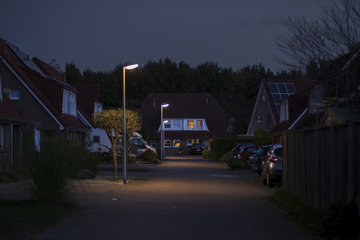Using a challenge as an opportunity
How local authorities organized the reception of asylum seekers in 2015/16
When several hundred thousand refugees came to Germany within a very short space of time five years ago, the local authority administrations responsible were put to the test. While the situation presented a challenge to the state, together with its social security systems and administration, it was by no means overwhelming. Instead, the local administrative system proved its ability to deal with the crisis in 2015/16. However, asylum seekers were also excluded when they arrived in the local communities. This is the conclusion of a study by the Max Planck Institute for the Study of Religious and Ethnic Diversity in Göttingen, in which three communities in Lower Saxony were studied.

The three towns studied, with populations of 165,000, 130,000 and 80,000 respectively, received up to 100 new arrivals every week in 2015/16. This presented them with an enormous challenge, since no information was provided in advance as to how many people would arrive and what their particular characteristics or requirements were. Furthermore, the legal framework in Germany was changed by a large number of new or amended laws, which were passed in quick succession from 2015 onwards. The individual local authorities also found it hard to retain an overview of political developments at the European level.
Although the authorities often had to react spontaneously in a situation that was almost impossible to fully comprehend, and even though an enormous amount of work was involved, the local structures certainly didn’t collapse during this uncertain period. Instead, the administrations in many local authorities made sure that the new arrivals were received properly and that the Departments involved coordinated with each other even though they were largely unprepared. “In reference to Merkel’s famous words, the local authorities were able to say ‘We did it’”, says Miriam Schader, the author of the study.
Major differences in the way the challenge was handled
The administrations in all three towns studied first initiated an “emergency operation” so that decisions could be made quickly. This enabled them to overcome the period of uncertainty in the short term. However, clear differences emerged between the local authorities, particularly in terms of how they handled the medium- to long-term developments. This was the conclusion drawn by the researchers after conducting numerous interviews with administration staff, from clerical processing through to Heads of Department.
For example, the middle town of the three that were studied temporarily refused to accept any more asylum seekers. In so doing, responsibility was simply passed on to other local authorities. Reference was made to the Federal State of Lower Saxony and the federal administration, who were requested to ensure that fewer refugees would arrive in the future. When significantly fewer asylum seekers entered Germany following the closure of the Balkan route in the spring of 2016, the local authorities quickly resumed their normal everyday business. Nothing was changed with regard to some structures, and reception capacities were quickly reduced again. Today, for example, there is now just a part-time employee working in the office for integration, and with ten new asylum seekers arriving every week, reception capacities are already fully stretched.
Perceiving the challenge as an opportunity
The two other municipal authorities developed a very different strategy. They turned the period of uncertainty into a period of transformation by actively shaping it and by improving the migration and integration structures that had been in place to date. For example, the largest of the three towns studied merged two administrative areas responsible for migration and integration in order to make it easier for refugees to access various support services, such as child allowance, the services provided in accordance with the Asylum Seekers Benefits Act, or Hartz IV social support funds.
The smallest of the three towns set up an advice centre for administrative and legal issues, which worked closely with voluntary integration advisers. On its own initiative, it created a new bus link to the accommodation housing the asylum seekers, which was located outside the town centre. Asylum seekers were also issued with an electronic health card.
These measures and the new structures in two of the towns were not only intended to deal with the consequences of the immigration wave in 2015/16, but also to better reflect the migration and diversity among the local population in the long term. In this way, two of the three municipal authorities studied proved their ability to cope and to develop a sustainable strategy.
Exclusion despite all the successes
However, the measures designed to improve participation also went hand in hand with a process of exclusion. “Naturally, we shouldn’t take a naive approach to the reception situation even in those local authorities that showed greater openness and the will to change,” says Miriam Schader. “Like nearly everywhere else, the refugees themselves experienced exclusion there, too.” Many of the places where they were housed were buildings that had been more or less rapidly converted to their new use, which were not entirely suited as accommodation and which offered almost no private space, even though many people lived there for a long period of time. Other buildings were located in the middle of industrial estates. By filling them with only men, or with people who did not fit into the system in the view of the administration, the refugees were at times even more isolated there, since they had no access to support from volunteers, for example. “Some buildings were also used for disciplining those who did not fit in, and for disciplining those who preferred to be cautious for fear of being assigned to a certain accommodation building,” Schader explains.
The study concludes that local authorities made little use of orientation aids such as best practice models. This also created a patchwork of municipal models for receiving refugees. The experience of the people seeking protection therefore varied between one place and another. The opportunity was not used everywhere of making long-term changes in order to receive the refugees. According to the study, this omission indicates a lack of far-sightedness. After all, it’s only a question of time before once again, more people arrive in Germany seeking asylum.












